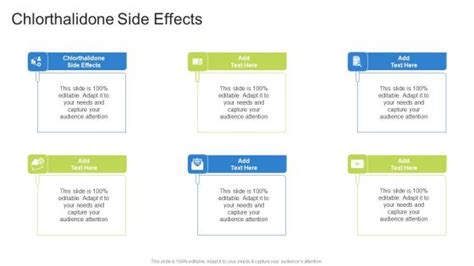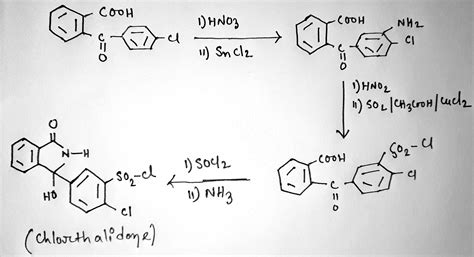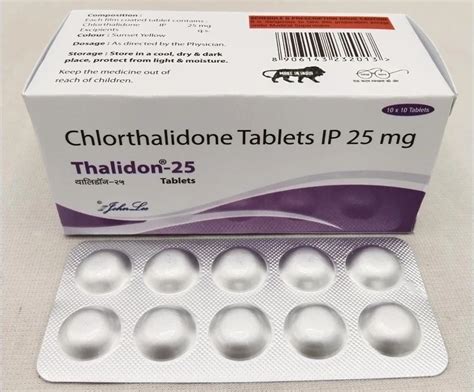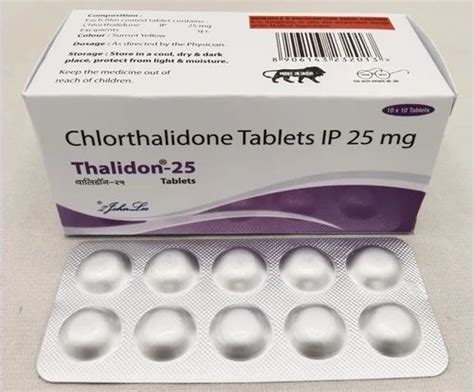Intro
Discover Chlorthalidone side effects, including hypokalemia, hyperglycemia, and electrolyte imbalance, and learn how this diuretic medication impacts blood pressure, kidney function, and overall health, with insights into management and mitigation of adverse effects.
The importance of understanding medication side effects cannot be overstated, particularly for prescription drugs like chlorthalidone, which is commonly used to treat high blood pressure and edema. Chlorthalidone belongs to a class of medications known as diuretics, specifically thiazide-like diuretics, which work by helping the kidneys remove more waste and excess fluids from the body. While it is effective in managing conditions related to fluid retention and blood pressure regulation, it's crucial for patients to be aware of the potential side effects associated with its use. This knowledge enables individuals to make informed decisions about their health care and to recognize when they might need to seek medical attention.
High blood pressure, or hypertension, is a significant health concern worldwide, contributing to heart disease, stroke, and kidney disease. Edema, which involves swelling caused by excess fluid trapped in the body's tissues, can be uncomfortable and, in severe cases, lead to more serious health issues. The management of these conditions often involves lifestyle changes, such as diet and exercise, alongside medication. Chlorthalidone, with its ability to reduce fluid volume and lower blood pressure, plays a vital role in this management. However, like all medications, it comes with a range of potential side effects, some of which can be mild and temporary, while others may be more severe and require medical intervention.
Understanding the side effects of chlorthalidone is essential for patients who are considering this medication or are already under treatment. It allows them to weigh the benefits against the potential risks and to discuss any concerns with their healthcare provider. Side effects can vary widely among individuals, with some people experiencing no adverse effects at all, while others may encounter several. The severity and frequency of side effects can also depend on factors such as the dosage of the medication, the duration of treatment, and the individual's overall health status. By being aware of what to expect and monitoring their health closely, patients can use chlorthalidone effectively while minimizing its negative impacts.
Common Side Effects of Chlorthalidone

Chlorthalidone's side effects can be categorized into common and less common effects. Common side effects include dizziness or lightheadedness, which can occur due to the reduction in blood pressure. Patients might also experience increased urination, as this is a direct effect of the medication's diuretic properties. Other common side effects include headache, nausea, and vomiting. These effects are usually mild and may diminish as the body adjusts to the medication. However, it's essential to report any persistent or bothersome side effects to a healthcare provider, as they can often be managed with adjustments to the treatment plan.
Less Common Side Effects
Less common but more serious side effects of chlorthalidone include electrolyte imbalance, particularly low levels of potassium (hypokalemia), which can lead to muscle weakness, fatigue, and heart arrhythmias. Some patients may experience gastrointestinal disturbances, such as diarrhea or constipation, beyond the initial nausea. Skin reactions, including rash and photosensitivity, can also occur, making it advisable for patients to limit sun exposure and use protective measures when outdoors. In rare cases, chlorthalidone can cause more severe side effects, such as pancreatitis, an inflammation of the pancreas, and severe allergic reactions, which require immediate medical attention.Mechanism of Action and Its Implications

Understanding how chlorthalidone works can provide insights into its side effects. As a thiazide-like diuretic, it acts on the kidneys to increase urine production, which helps reduce the volume of fluid in the bloodstream and lower blood pressure. This mechanism also explains why increased urination is a common side effect. Additionally, the medication can affect the balance of electrolytes in the body, leading to potential imbalances that need monitoring. The long-term effects of chlorthalidone on kidney function and overall cardiovascular health are areas of ongoing research, with studies indicating that, when used appropriately, the medication can be a valuable component of hypertension and edema management.
Steps to Minimize Side Effects
To minimize the side effects of chlorthalidone, patients should follow their healthcare provider's instructions carefully. This includes taking the medication exactly as prescribed, without skipping doses or taking extra doses. It's also crucial to attend follow-up appointments to monitor blood pressure, kidney function, and electrolyte levels. Lifestyle adjustments, such as reducing sodium intake, exercising regularly, and maintaining a healthy weight, can also help manage side effects and enhance the effectiveness of the medication. In cases where side effects are bothersome or persistent, discussing these with a healthcare provider can lead to adjustments in the treatment plan that improve tolerability.Special Considerations and Interactions

Certain individuals may need to take special precautions when using chlorthalidone. For example, patients with kidney disease should be closely monitored, as the medication can affect kidney function. Those with liver disease may also require dose adjustments. Pregnant women or those planning to become pregnant should discuss the use of chlorthalidone with their healthcare provider, as there may be safer alternatives. Additionally, chlorthalidone can interact with other medications, such as NSAIDs, which can reduce its effectiveness, and lithium, which can increase the risk of lithium toxicity. A comprehensive review of all medications, including over-the-counter drugs and supplements, with a healthcare provider is essential to avoid harmful interactions.
Monitoring and Follow-Up
Regular monitoring and follow-up appointments are vital for patients taking chlorthalidone. These visits allow healthcare providers to assess the medication's effectiveness, check for any signs of side effects, and make necessary adjustments to the treatment plan. Patients should keep a record of their blood pressure readings, any side effects experienced, and questions or concerns they have, to discuss during these appointments. This collaborative approach to healthcare ensures that chlorthalidone is used safely and effectively, maximizing its benefits while minimizing its risks.Conclusion and Future Directions

In conclusion, while chlorthalidone is an effective medication for managing high blood pressure and edema, its potential side effects must be carefully considered. By understanding these side effects, patients can work closely with their healthcare providers to minimize risks and maximize benefits. Ongoing research into the long-term effects of chlorthalidone and its interactions with other medications will continue to inform treatment guidelines, ensuring that patients receive the most effective and safest care possible. As medical science advances, new therapies and management strategies may emerge, offering additional options for those requiring diuretic therapy.
Final Thoughts
The management of hypertension and edema requires a multifaceted approach, incorporating lifestyle modifications, regular monitoring, and, when necessary, medication like chlorthalidone. By being informed and proactive, patients can play a significant role in their healthcare, ensuring that they receive the best possible outcomes from their treatment plan. Whether you're considering chlorthalidone or are already taking it, staying engaged with your healthcare provider and educated about your treatment can make all the difference in managing your condition effectively and safely.What is the most common side effect of chlorthalidone?
+The most common side effects include dizziness or lightheadedness, increased urination, headache, nausea, and vomiting.
Can chlorthalidone cause serious side effects?
+Yes, while rare, chlorthalidone can cause serious side effects such as electrolyte imbalance, pancreatitis, and severe allergic reactions, which require immediate medical attention.
How can I minimize the side effects of chlorthalidone?
+To minimize side effects, follow your healthcare provider's instructions carefully, attend all scheduled follow-up appointments, and make lifestyle adjustments as recommended, such as reducing sodium intake and exercising regularly.
We invite you to share your thoughts and questions about chlorthalidone and its side effects in the comments below. Your experiences and inquiries can help others better understand this medication and its implications for health management. Additionally, consider sharing this article with anyone who might benefit from this information, as knowledge is a powerful tool in navigating healthcare decisions.
